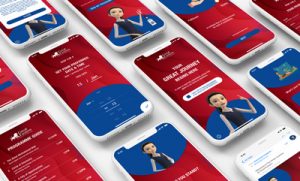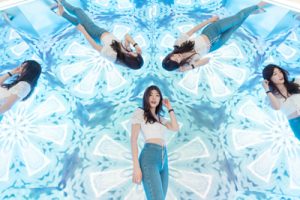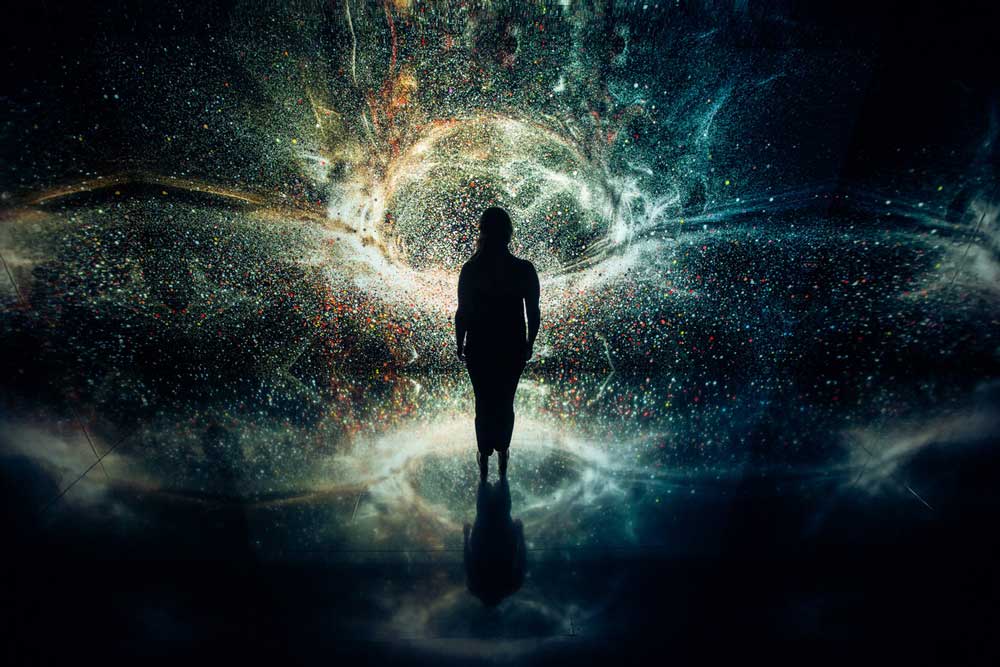Interactive media for art refers to artistic works and experiences that engages and involve the audience or viewer through interactivity. It combines imaginative expression with technology, allowing participants to interact with the art form in various ways, such as through touch, movement, voice, or other forms of sensory.
Throughout history, the concept of interactive media for art has evolved alongside technological advancements, pushing the boundaries of traditional art forms and inviting viewers to actively engage in the artistic process. It has become a dynamic field that continues to evolve as new technologies emerge.

5 Advantages of utilising Interactive Media
- Personalisation: Interactive media enables marketers to tailor content based on user preferences and behaviors. Through interactive elements, users can provide feedback, select preferences, or engage in interactive storytelling, allowing marketers to deliver personalised messages and experiences. This personalisation fosters a stronger connection with the audience and enhances brand loyalty.
- Enhance brand perception: By incorporating interactive media into marketing campaigns, brands can showcase their creativity, innovation, and commitment to delivering unique experiences. Interactive campaigns can create positive associations with the brand, positioning it as modern, forward-thinking, and customer-centric. This can strengthen brand perception and increase brand loyalty among consumers.
- Increase engagement: Interactive media allows marketers to create immersive experiences that capture the attention of their target audiences. It encourages active participation, resulting in higher engagement levels compared to traditional marketing campaigns.
- Data collection and analytics: Interactive media provides valuable data and insights into user’s behavior, preferences, and interests. Marketers can collect data through interactive forms, surveys, quizzes, or user interactions within the media. This data can be analyzed to gain a deeper understanding of the target audience, refine marketing strategies, and make data-driven decisions for future campaigns.
- Improve conversion rates: By actively involving users in the marketing experience, interactive campaigns can capture attention, generate leads, and guide users through the customer journey. Interactive elements can also facilitate the collection of user information, allowing for targeted follow-ups and conversion optimization.
Interactive media offers marketers the opportunity to create memorable and engaging experiences, gather valuable data, and increase brand visibility and conversion rates. By leveraging the interactive capabilities of digital platforms, marketers can deliver more impactful and personalized campaigns, fostering stronger connections with their target audience.
Examples of Interactive Installations around the World
As the world evolve and progress, interactive media has become a prominent and engaging aspect of contemporary art, blurring the boundaries between the artist, artwork, and the audience.
In Singapore and around the world, numerous artists have embraced interactive media as a means of artistic expression. Here are some notable examples of interactive installations, digital art, and interactive performance art:
 (Souce: Future World – ArtScience Musuem, teamLab)
(Souce: Future World – ArtScience Musuem, teamLab)
“Rainbow” by teamLab (Singapore): Located at the Future World exhibition in the ArtScience Museum in Singapore, “Rainbow” is an interactive digital installation that invites visitors to collaborate in the creation of a vibrant and evolving artwork. By physically interacting with the space, participants can unleash a burst of colorful digital flowers, animals, and natural elements.
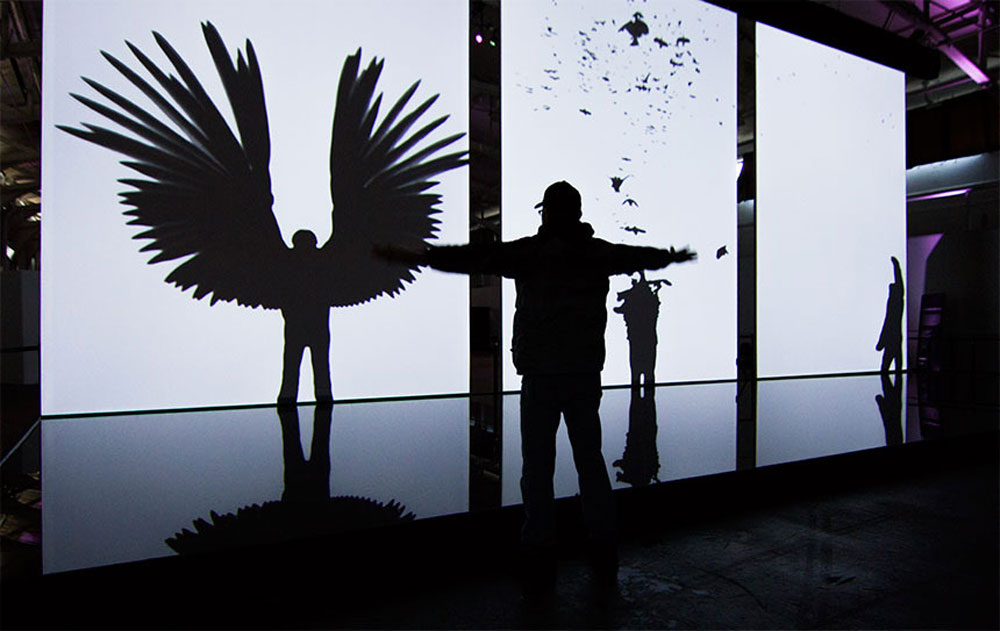 (Souce: The Treachery of Sanctuary, Andrew Carr)
(Souce: The Treachery of Sanctuary, Andrew Carr)
“The Treachery of Sanctuary” by Chris Milk (United States): This interactive installation uses a combination of shadow play and motion sensors to create an immersive and interactive experience. Participants stand in front of a large screen and see their shadows transformed into angelic wings. As they move, their shadows are altered, allowing them to engage with the artwork in a personal and introspective manner.
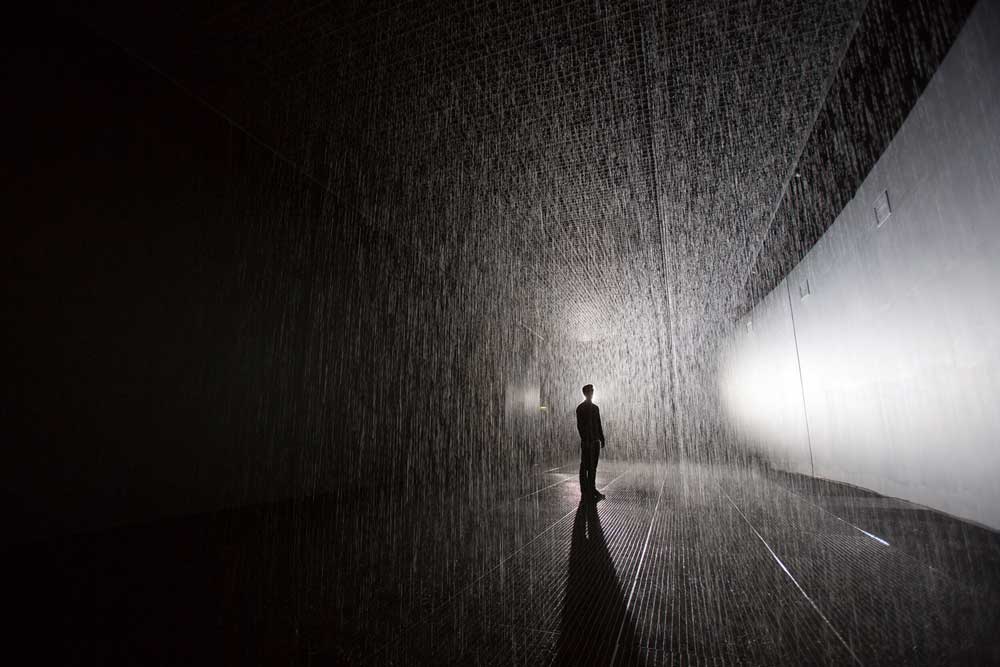 (Souce: Rain Room, Random International)
(Souce: Rain Room, Random International)
“Rain Room” by Random International (United Kingdom): “Rain Room” is an installation that simulates a torrential downpour, but with a twist. Using motion sensors, the rain stops wherever visitors walk, allowing them to navigate through the rain without getting wet. This interactive experience raises questions about our relationship with nature and our desire to control it.
 (Souce: Borderless, teamLab)
(Souce: Borderless, teamLab)
“TeamLab Borderless” (Japan): Hailing from Japan but attracting visitors from around the world, TeamLab Borderless is a digital art museum that features a multitude of immersive and interactive installations. The artworks seamlessly blend with one another, creating an interconnected environment where visitors can explore, touch, and interact with the installations, resulting in a continuously evolving and dynamic experience.
 (Souce: The Pool, traveling since 2008, Jen Lewis Studio)
(Souce: The Pool, traveling since 2008, Jen Lewis Studio)
“The Pool” by Jen Lewin (United States): “The Pool” is a large-scale interactive light installation that resembles a giant water pool filled with circular LED pads. The LED pads change color and respond to the movement of visitors as they step or jump on them, creating a mesmerizing visual and interactive display.
 (Souce: Performance 4, Roman Ondak, Esther Schipper)
(Souce: Performance 4, Roman Ondak, Esther Schipper)
“Measuring the Universe” by Roman Ondak (Slovakia): This participatory installation invites visitors to have their height marked on a gallery wall, creating a collective representation of human height. Over time, the markings accumulate, reflecting the presence and participation of different individuals, emphasizing the social aspect of the artwork.
Through the integration of technology, artists have been able to create immersive and participatory experiences that encourage active engagement and exploration. This form of art often relies on the viewers’ interaction with the artwork, allowing them to shape and influence the outcome of the piece.
The Wonders of Interactive Media for Art
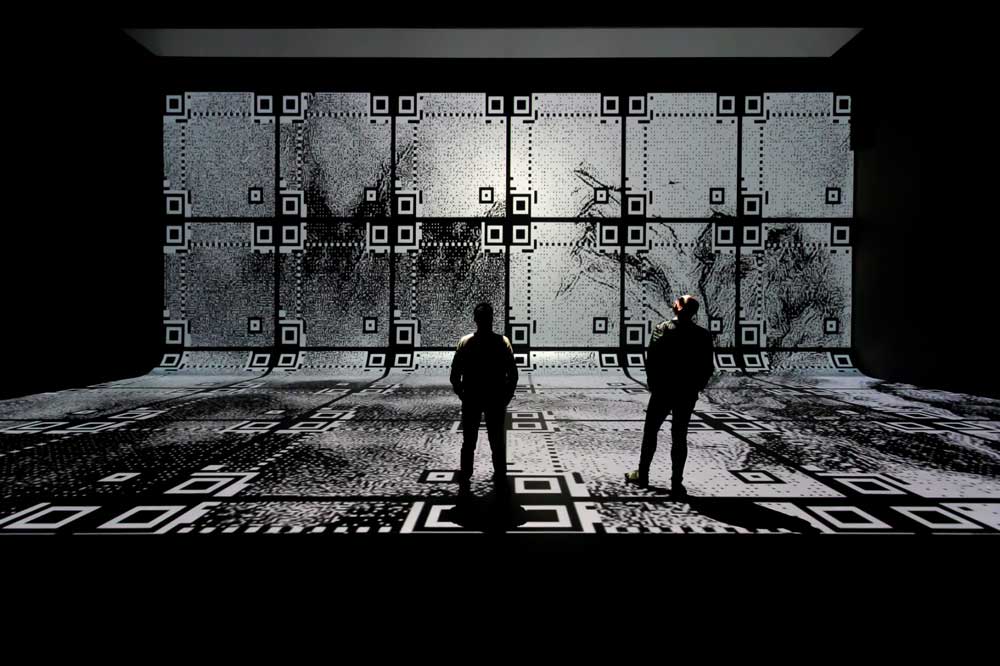
Interactive media has revolutionized the art world, offering exciting new possibilities for both artists and audiences. By merging technology and creativity, interactive media has opened up a whole new realm of artistic expression.
By harnessing the power of technology, brands can engage audiences in profound ways, offering unique and unforgettable artistic encounters. The wonders of interactive media for art are only just beginning, and we can expect to see even more exciting developments in the future. Drop us an email now to re-invent your next marketing experience.

